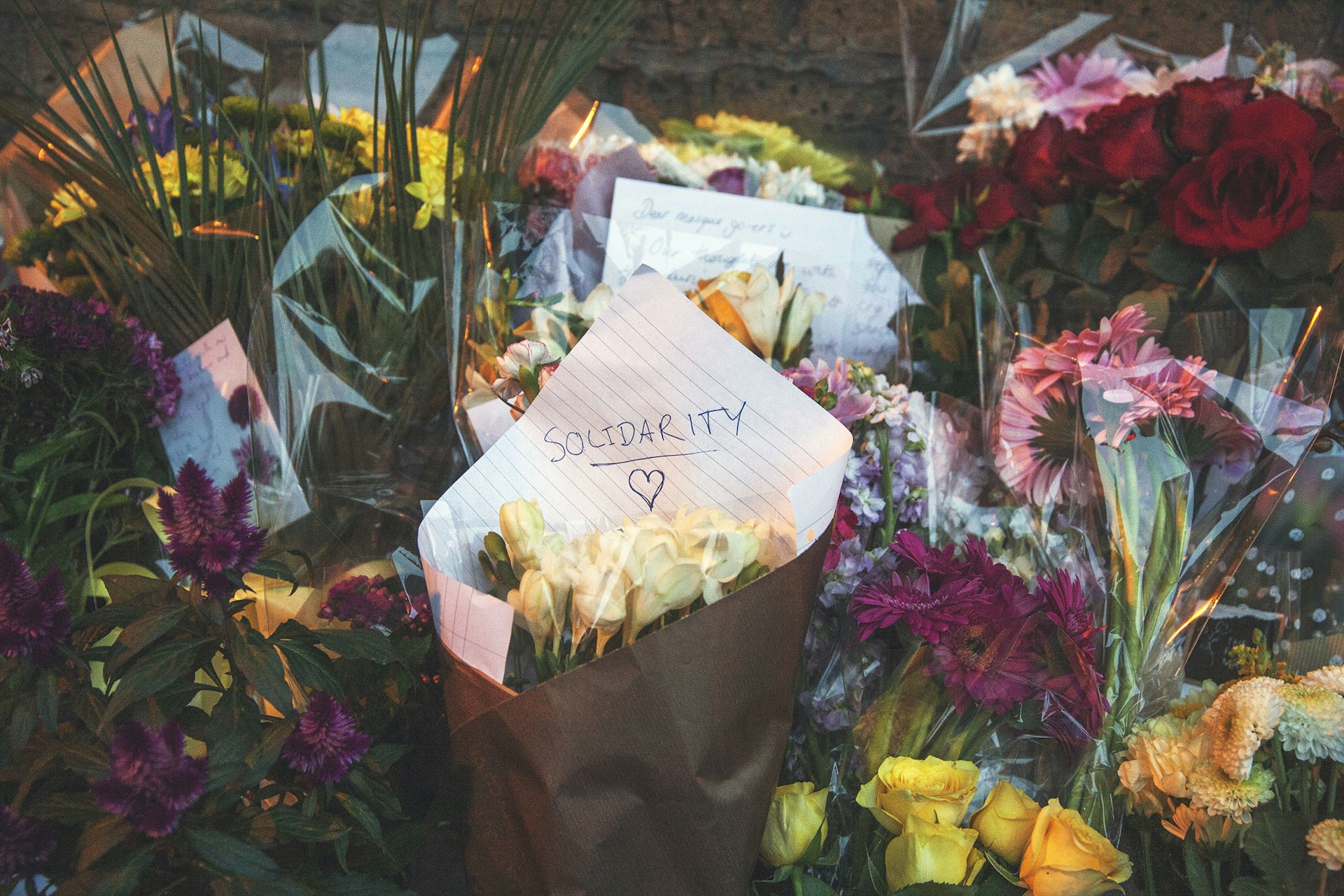- Text by Andrea Kurland
- Photography by Jordi Ruiz Cirera
Karla Nutter gets up every morning before the rest of her family and leaves her home while the sky is pink. She says goodbye to her sleepy two-year-old son, and to Jorge, who she met at a piñata party as a teen, fell in love with and married soon thereafter.
At 22, Karla is among the 2.7 million people who make up El-Paso-Juárez-Las Cruces, one of the largest binational regions in the world. Her commute to work would take 20 minutes in any other metropolitan area – but things are slower when you have to cross an international border.

Karla lives in Ciudad Juárez, Chihuahua, but works in El Paso, Texas – interconnected cities on either side of the Rio Grande, a near-barren riverbed buttressed on either side by perhaps the most politically charged metal fence in the world. Every day she drives to the Paso del Norte bridge, where she joins thousands of other pedestrians – students, workers, dual citizens like her – who cross from Mexico into the United States by foot. Every morning without fail she answers the same line of questioning; every evening, the same record spins again.
“It all depends on the immigration officer at the counter,” explains Karla. “Sometimes they ask me: ‘What do you do in Juárez?… You can’t live in Juárez.’ But I explain, ‘Yes, I’m an American citizen but I can live wherever I want.’ I’m a citizen, same as they are, and I know my rights.”
Encounters of this kind are nothing new for Karla. She grew up in El Paso, but travelled back and forth to visit family, and sees both cities as a foothold for her identity. Survival strategies become inbuilt when you’re profiled on a daily basis; life on the border breeds a chameleon-like resistance.
“[In Juárez] I present myself as Mexican and in the US I present myself as American,” says Karla. “There’s a lot of racism in the US, so if I were to say I was Mexican, that’s how I’d be treated.”

Karla chooses to live in Juárez, despite her right to live in the US, so that she can be with her young family. Jorge, who was deported after being found without papers, was among some 11 million undocumented Mexican immigrants who live and work in the United States, and who contribute more than they take. It’s not hard to comprehend what may have triggered his journey.
Until 2012, Juárez bore the reputation of “most violent city in the world”, peaking in 2010 with the most violent homicides in a year: 3,622 – 10 a day. This terror-like state – created by the Sinaloa and Juárez drug cartels, who waged a war over trafficking routes – started escalating in 2007, the same year that the United States Border Control erected the extensive Juárez fence. For many locals the timeline is no coincidence. Mayor Armando Cabada says the fortified border catalysed the spike: “The narco traffickers had to battle much harder to cross their drugs into the United States and a lot ended up staying here,” he said in January, when Trump took up his Presidential seat on a campaign promise to further seal the border by erecting a wall.
But in 2017, Juárez is springing back to life. Once abandoned streets are a hive of activity, and small joys are replacing fear. It’s a rebirth that the community has taken ownership of with pride, and a story they hope will supersede previous headlines.
“In Juárez, it’s true there is a lot of violence but not like people think,” says Karla. “Like you’re just walking and there are shootouts – it’s not like that.”
But still, life in the US appeals. El Paso, despite being one of the poorest cities in the US, is also ranked amongst the safest. What Jorge earns in a week in Juárez, Karla can earn in a day.

“We’d like to go back there to do have what you’d call ‘a better life,’” says Karla, adding air quotes to emphasise that there’s no lack of happiness here. “[It’s just that] here the struggle is bigger.”
To access the future they hope is within reach, Jorge must first apply for a waiver – a form of forgiveness given by US authorities to people who are “inadmissible” under immigration law. Waivers, or “pardons”, like the I-212 or I-601 give people like Jorge hope of re-entry following deportation. But an already complicated and lengthy application process is getting trickier and less certain by the day.
Immigration law has become an unpredictable minefield under Trump’s administration. January’s executive order, and the resultant Muslim Travel Ban, was just the first grenade of many, kicking up a dust-cloud of confusion purpose-designed to instil fear.
In February, two more memos issued by Homeland Security Secretary Stephen Kelly targeted an even broader spectrum of undocumented people living in the US, disorientating those working to protect and secure their rights.
Fiona McEntee, an immigration lawyer based in Chicago, says the law community has been in a state of high-alert since the memos were released. “They were not very well written,” she says. “And because they often contained conflicting information, it was really hard for us to even understand who they would impact.”
Under the Obama administration, deportations were targeted at people with criminal convictions. But as per the new memos, “Anyone who is undocumented is a threat to public and national security.” Meaning, everyone is fair game.
According to Human Rights Watch, this conflation of illegal immigration and crime is both dangerous and false: “The new enforcement priorities potentially make nearly all 11 million undocumented immigrants ‘priority’ targets for deportation – setting the stage for what could well be a nationwide dragnet that would harm millions of people.”
Since February, McEntee’s firm have been receiving an extra 600-700 emails a day. They’ve been holed up at O’Hare Airport assisting victims of the Travel Ban, and have been running community meetings to inform undocumented people of their rights – from what to do if someone knocks on your door, to what a warrant actually looks like.
“These new executive orders basically made anyone who is undocumented a priority for deportation,” she explains. “Parents are afraid of dropping their kids at school and not knowing if they will be there to pick them up. These are real fears. People are not panicking unnecessarily. They have these executive orders that are basically targeting them.”
For families like Karla’s, uncertainty breeds fear. And pardons represent a lifeline. Doing away entirely with waivers like the I-601 seems unlikely for now: Trump would have to pass new regulation, which is both a lengthy and complex process. But the point remains that it is within his power.
“If there’s one thing that we’ve learned it’s that he’s extremely unpredictable,” says McEntee. “Even just seeing his tweets over the Muslim ban, as the case goes to the Supreme Courts. I would caution anybody in trying to predict what they’re going to do.”
This unpredictable state has become a default setting in 2017. Just this week the Trump administration intimated they will not rescind the Deferred Action for Childhood Arrivals (DACA) – a 2012 policy by US President Barack Obama that protects from deportation nearly 600,000 so-called ‘Dreamers’, immigrants brought into the country illegally by their parents. There are real fears that information voluntarily provided by undocumented families could be used against them if DACA is rescinded. And Trump’s administration refuses to confirm if their commitment is long-term, leaving millions further unsettled.
And yet, the true impact of the Trump era is far more insidious than any single move – or even what he may or may not do next.
Working on pro-bono cases at O’Hare, McEntee has witnessed the slow trickle-down effect that can infect an entire institution. “I thought it was actually quite disturbing that Karla was getting asked where she’s living by Customs and Border Protection officers. She’s a US citizen, she’s entitled to live in Mexico if she wants,” she says. “But when your boss is essentially spewing all this anti-immigrant sentiment – when that is coming from the top down – of course the officers have gotten the seal of approval to flex their muscles, and we definitely see it in terms of the adjudications that are happening at the airport.”
Karla’s daily run-ins with emboldened CBP officers only fortify her self-belief. “I am American. I have my rights and I defend myself if someone is being racist,” she says. “There are immigration officers who feel very American, but they are not. They are half and half like me.”

It’s with this sense of dignity and pride that she and Jorge walked across the Paso del Norte bridge two years ago – white gown, two-piece suit, cameras at the ready – and got married in the middle on the border, putting pay to the arbitrary ways that nations divide people and making sure their union stands for something on both sides.
“There’s a lot of people, hardworking people – yes they are undocumented but they’re very productive members of society,” says McEntee. “They’re working, paying taxes, contributing. It’s so wrong for the country to reap the benefits of their work and not even give them the dignity to allow them any type of pathway to permanent residency.”
Mitad Y Mitad, an original Huck film, is directed by Jordi Ruiz Cirera.
Music by Air Crickets, a collaboration between Ben Fries and Simon Beins.
Enjoyed this article? Like Huck on Facebook or follow us on Twitter.
